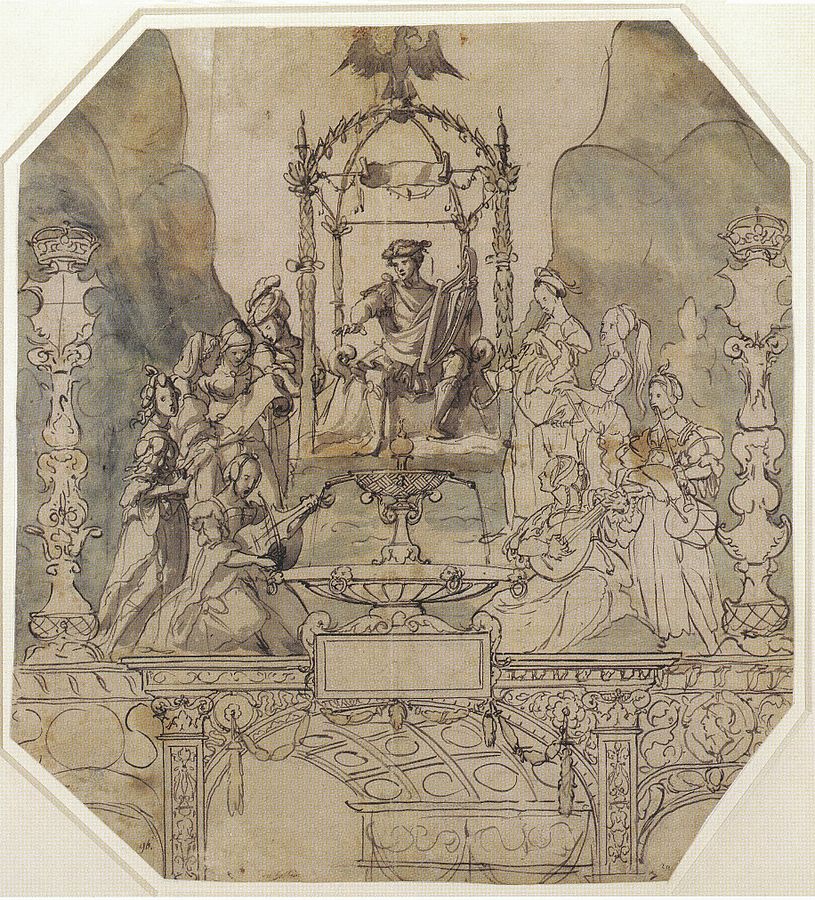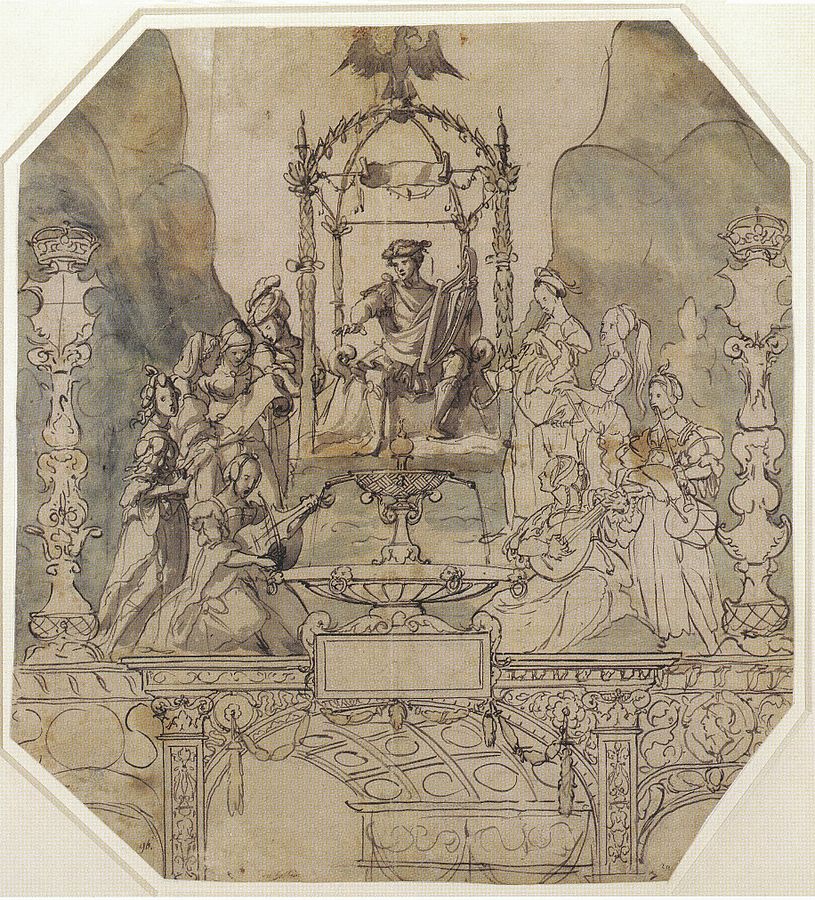
This day was the ultimate triumph for Anne Boleyn: after seven years of struggle and uncertainty, she became the anointed Queen of England, six months pregnant with the promised heir to the throne. But I can’t help viewing the events in the light of what happened afterwards. To me it is a poignant, ironic moment before her ultimate tragedy (which, ironically, is what cemented her legacy and made her immortal…).
Today’s coronation preceded and followed days of festivities and formalities – the before including a procession of barges down the Thames and Anne’s formal entrance into London, the afterwards consisting of jousts, tournaments, and dancing. In the morning was held the traditional and moving ceremony that effectively crowned her as a queen regnant (because it not only anointed her, but also placed the Crown of St. Edward on her head, a gold scepter in her right hand and an ivory rod in her left). Then came the banquet that lasted for hours (twenty-eight dishes were served for the first course, twenty-three for the second…). Anne was seated alone in the middle of the center table, with her ladies standing behind her with napkins and a fingerbowl – and ready to hide what she was doing when she needed to spit or even vomit).
The following comes from Edward Hall’s Chronicles:
On 1 June Queen Anne was brought from Westminster Hall to St Peter’s Abbey in procession, with all the monks of Westminster going in rich copes of gold, with thirteen mitred abbots; and after them all the king’s chapel in rich copes with four bishops and two mitred archbishops, and all the lords going in their parliament robes, and the crown borne before her by the duke of Suffolk, and her two sceptres by two earls, and she herself going under a rich canopy of cloth of gold, dressed in a kirtle of crimson velvet decorated with ermine, and a robe of purple velvet decorated with ermine over that, and a rich coronet with a cap of pearls and stones on her head; and the old duchess of Norfolk carrying her train in a robe of scarlet with a coronet of gold on her cap, and Lord Burgh, the queen’s Chamberlain, supporting the train in the middle.
After her followed ten ladies in robes of scarlet trimmed with ermine and round coronets of gold on their heads; and next after them all the queen’s maids in gowns of scarlet edged with white Baltic fur. And so she was brought to St Peter’s church at Westminster, and there set in her high royal seat, which was made on a high platform before the altar. And there she was anointed and crowned queen of England by the archbishop of Canterbury and the archbishop of York, and so sat, crowned, in her royal seat all through the mass, and she offered at the said mass. And when the mass was done they left, every man in his order, to Westminster Hall, she still going under the canopy, crowned, with two sceptres in her hands, my Lord Wiltshire her father, and Lord Talbot leading her, and so dined there; and there was made the most honourable feast that has been seen.
The great hall at Westminster was richly hung with rich cloth of Arras, and a table was set at the upper end of the hall, going up twelve steps, where the queen dined; and a rich cloth of estate hung over her head. There were also four other tables along the hall; and it was railed on every side, from the high dais in Westminster Hall to the platform in the church in the abbey.
And when she went to church to her coronation there was a striped blue cloth spread from the high dais of the king’s bench to the high altar of Westminster on which she went.
And when the queen’s Grace had washed her hands, then came the duke of Suffolk, high constable for that day and steward of the feast, riding on horseback, richly dressed and decorated, and with him, also riding on horseback, Lord William Howard as deputy for the duke of Norfolk in his office of marshall of England, and there came the queen’s service followed by the archbishop’s with a certain space between, which was all borne by knights; the archbishop sitting at the queen’s board, at the end on her left hand. The earl of Sussex was sewer, earl of Essex carver, earl of Derby cup bearer, earl of Arundel butler, Viscount Lisle panter, and Lord Grey almoner.
SOURCES:
Alison Weir, The Six Wives of Henry VIII
Hall’s Chronicle of the History of England – which can be a little difficult to read so please visit EnglishHistory.Net – The Crowning of Anne Boleyn for the wonderful transcription (poke around on there, it’s a great site!)
***
If you like my posts, you’ll love my books! My Seymour Saga trilogy tells the gripping story of the short-lived dynasty that shaped the Tudor Era. Jane the Quene skews romantic, The Path to Somerset is pure Game of Thrones (without the dragons), and The Boy King is a noir coming-of-age. Get them now through Amazon, Barnes & Noble, Kobo, and Apple, or even your local independent bookstore!

(PS Already read them? Did you love them? Then please review them – even just a stars rating! It makes a huge difference in helping new readers find them and would mean the world to me!)

How nice to drink my first coffee of the day reading you. The Holbein Sketch is lovely 🙂 Have a nice day 🙂
Thank you! You too!